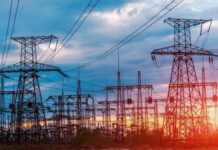A sustainable product celebrates its German premiere at RWE’s Kaskasi offshore wind farm: Siemens Gamesa and RWE are committed to installing a select number of wind turbines with recyclable blades off the coast of Heligoland. The 81-meter long blades are the first of their kind, and will enable the recycling of the composite parts into new products at the end of their lifecycle, helping to pave the way towards the full recyclability of wind turbines. For RWE, Kaskasi will be instrumental in testing the world’s first recyclable blade under operational conditions from 2022 onwards.
Many components of a wind turbine, such as the tower and nacelle components, already have established recycling practices. Until now, the composite materials used in wind turbine blades have been more challenging to recycle because a resin system binds all components together. In its recyclable blade Siemens Gamesa is using a new resin type, with a chemical structure that makes it possible to efficiently separate the resin from other components. The process protects the properties of the materials and so allows them to be reused in new casting applications, for example in the automotive industry, or in consumer goods like flight cases and flatscreen casings.
RWE is driving the evolution of innovative technology
Using recyclable wind turbine blades is only one example of how RWE is leading technological development in the offshore wind industry. At its 342 megawatt wind farm Kaskasi the company will install for the first time ever special collars around three monopile foundations. The steel collars are designed based on a RWE patent and will be installed at seabed level. The space between collar and monopile foundation will be filled with grout material to create a stable connection. RWE will carry out accompanying tests to verify that the collar improves the structural behaviour in comparison with standard monopiles.
Furthermore Kaskasi will be the first commercial offshore wind farm in the world to use an improved installation method for driving the wind turbine foundations into the seabed to their target penetration depth. In comparison to conventional hammering techniques the innovative vibro pile driving method will significantly speed up the process of installing the foundations, has a gentler impact on the structure while producing far less noise, and reduces impacts on the maritime environment. The pilot project at Kaskasi is accompanied by a comprehensive research project funded by the German Federal Ministry for Economic Affairs.
Kaskasi wind farm will be capable of supplying 400,000 homes with green electricity
Kaskasi offshore wind farm is to be constructed 35 kilometres north of the island of Heligoland. Once all 38 wind turbines are fully operational at the end of 2022, Kaskasi offshore wind farm will supply the equivalent of approximately 400,000 households with green electricity.
“We are pleased that our offshore wind farm Kaskasi is able to provide a fantastic facility for testing innovations; here we are preparing to test special steel collars and to use an improved installation method for foundations. Now, Kaskasi is set to install the world’s first recyclable wind turbine blade manufactured by Siemens Gamesa. This is a significant step in advancing the sustainability of wind turbines to the next level.”





































